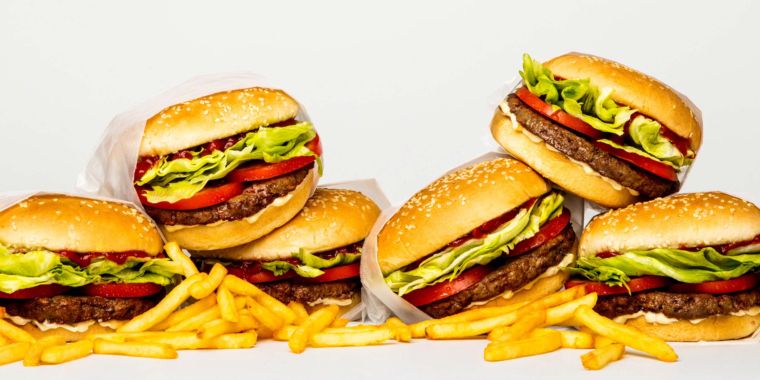Indeed, when independent researchers at Johns Hopkins University decided to get the best estimates they could by combing through the published literature, they found that in the 11 life cycle analyses they turned up, the average greenhouse gas footprint from plant-based meats was just 7 percent of beef for an equivalent amount of protein. The plant-based products were also more climate-friendly than pork or chicken — although less strikingly so, with greenhouse gas emissions just 57 percent and 37 percent, respectively, of those for the actual meats.
Similarly, the Hopkins team found that producing plant-based meats used less water: 23 percent that of beef, 11 percent that of pork, and 24 percent that of chicken for the same amount of protein. There were big savings, too, for land, with the plant-based products using 2 percent that of beef, 18 percent that of pork, and 23 percent that of chicken for a given amount of protein. The saving of land is important because, if plant-based meats end up claiming a significant market share, the surplus land could be allowed to revert to forest or other natural vegetation; these store carbon dioxide from the atmosphere and contribute to biodiversity conservation. Other studies show that plant-based milks offer similar environmental benefits over cow’s milk.
…
Soy milk, for example, requires just 7 percent as much land and 4 percent as much water as real milk, while emitting only 31 percent as much greenhouse gas. Oat milk needs 8 percent of the land and 8 percent of the water, while releasing just 29 percent as much greenhouse gas. Even almond milk often regarded as a poor choice because almond orchards guzzle so much fresh water—uses just 59 percent as much water as real milk.
But not all plant-based milks deliver the same nutrient punch. While soy milk provides almost the same amount of protein as cow’s milk, almond milk provides only about 20 percent as much—an important consideration for some. On a per-unit-protein basis, therefore, almond milk actually generates more greenhouse gas and uses more water than cow’s milk.



Removed by mod
Are you seriously saying the list of reports identifying factory farms as the perfect breeding ground for zoonotic viruses and massive air and water pollution shouldn’t be considered? Its like you work for the beef industry. Even more so, back in the early 2000’s a book called The China Study demonstrated the much higher consumption rate of red meat in the west is directly associated with the higher cancer rates compared to the east. But I enjoy science while it seems you enjoy meat and don’t care at what cost.
You know where herbivores get all of their nutrients from…plants, so plants are just as beneficial and dont require steps consuming more resources while also being the ideal breeding ground for bird and swine flu’s plus mad cow disease.
99% of All Animal Products in the U.S. Come From Factory Farms: https://www.livekindly.com/99-animal-products-factory-farms/
Removed by mod